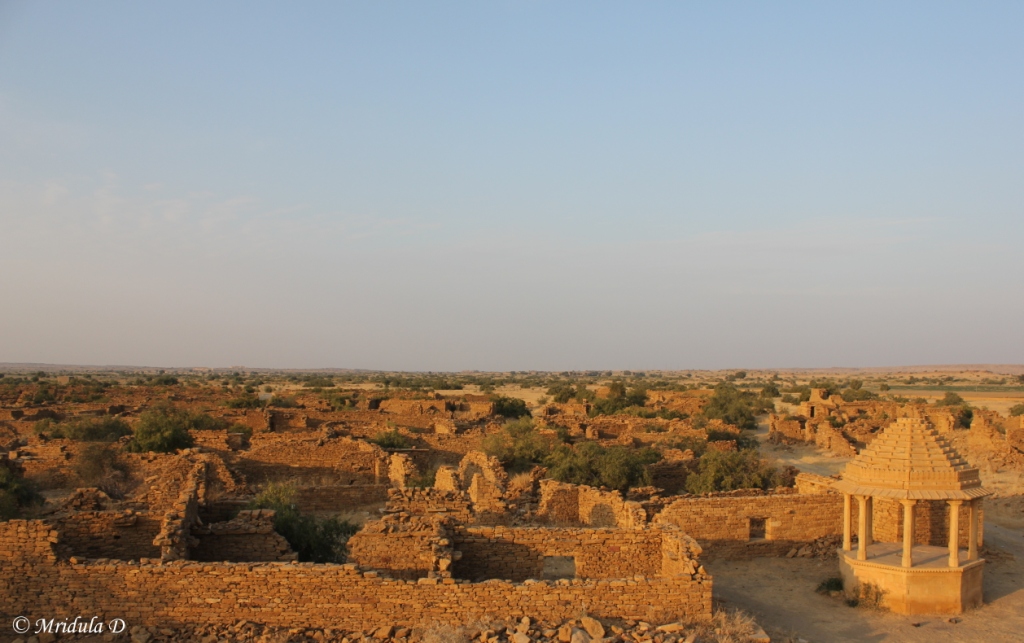The abandoned village of Kuldhara, nestled in the heart of Rajasthan near Jaisalmer, is one of India’s most mysterious and intriguing destinations. Once a prosperous settlement, it now stands in ruins, surrounded by an aura of enigma and tales of a lingering curse. Travelers from across the globe flock to this ghost village, drawn by its history, folklore, and spine-chilling atmosphere. If you’re planning to explore this intriguing site, consider opting for a trusted Jaisalmer Taxi Service to ensure a seamless journey.
The History of Kuldhara
Kuldhara was established in the 13th century by the Paliwal Brahmins, a community renowned for their agricultural and business acumen. The village flourished for centuries, becoming a hub of trade and culture. Its strategic location, coupled with the innovative irrigation techniques of the Paliwal Brahmins, contributed to its prosperity. However, this thriving community vanished overnight in the early 19th century, leaving behind unanswered questions and a haunting legacy.
The official historical records attribute the abandonment to socio-economic pressures and political turmoil. Increased taxes and the deteriorating relationship with local rulers are believed to have forced the residents to flee. Yet, the narrative doesn’t end there—myths and folklore add layers of intrigue to Kuldhara’s mysterious demise.
Myths Surrounding the Curse of Kuldhara
The most popular legend revolves around Salim Singh, a ruthless prime minister of the Jaisalmer kingdom. According to the tale, Salim Singh set his sights on the village chief’s daughter and demanded her hand in marriage. His intentions were not pure, and his ultimatum came with a dire threat: if the marriage proposal was refused, the village would face severe consequences.
The Paliwals, known for their unity and resilience, were unwilling to surrender to such tyranny. In a collective act of defiance, they vacated Kuldhara and its neighboring villages overnight, leaving behind an eerie emptiness. Before their departure, the villagers are said to have cursed the land, ensuring that no one could ever settle there again. To this day, no attempts to inhabit Kuldhara have been successful.
The Facts: Unveiling the Mystery
While the myths of Kuldhara are captivating, modern investigations provide a different perspective. Archaeological studies suggest that dwindling water resources and an unstable economy were significant factors in the mass exodus. Environmental challenges, such as the shifting sands of the Thar Desert, may have made sustaining life in Kuldhara increasingly difficult.
Researchers have also examined the psychological impact of the curse narrative on those attempting to repopulate the village. The eerie silence, coupled with tales of hauntings, deters settlers and reinforces the mystique surrounding Kuldhara. Paranormal investigators and tourists alike report unexplained occurrences, further fueling its reputation as a haunted site.
Experiencing Kuldhara Today
Visiting Kuldhara is a unique experience, offering a glimpse into history, culture, and folklore. The ruins, though desolate, echo with the stories of their former inhabitants. Crumbling homes, ancient temples, and the remnants of wells showcase the architectural brilliance of the Paliwal Brahmins. To make the most of your visit, plan a Jaisalmer Sightseeing Tour that includes Kuldhara as a key destination.
For those fascinated by the supernatural, Kuldhara presents an unparalleled opportunity to explore the unknown. Whether you believe in the curse or not, the village’s haunting beauty leaves a lasting impression.
Key Highlights of Kuldhara
- Architectural Marvels: Despite being abandoned for centuries, Kuldhara’s ruins display the ingenuity of the Paliwal Brahmins. Intricately designed homes, temples, and wells remain visible, hinting at the village’s prosperous past.
- The Paranormal Appeal: Many visitors claim to feel an eerie presence while exploring Kuldhara, adding an adrenaline rush to the experience.
- Scenic Location: Surrounded by the golden sands of the Thar Desert, Kuldhara offers a picturesque setting, especially during sunrise and sunset.
- Cultural Insights: Beyond its myths, Kuldhara is a testament to the resilience and unity of the Paliwal community.
Tips for Exploring Kuldhara
- Choose the Right Season: The best time to visit is between October and March, when the weather is pleasant.
- Travel Prepared: Carry water, sunscreen, and comfortable footwear, as the desert terrain can be harsh.
- Engage a Local Guide: A knowledgeable guide can provide deeper insights into Kuldhara’s history and myths.
- Respect the Site: Kuldhara is a protected heritage site; ensure you leave it as you found it.
Conclusion
Kuldhara stands as a compelling reminder of the interplay between history and folklore. While the true reasons behind its abandonment remain a subject of debate, the village’s legends and ruins continue to captivate the imagination of all who visit. Whether you’re a history enthusiast, a lover of mysteries, or simply a curious traveler, Kuldhara offers an experience like no other. Make your journey unforgettable by choosing reliable transportation services and immersing yourself in the stories etched into the sands of this enigmatic village.

